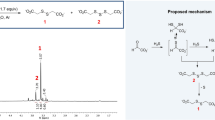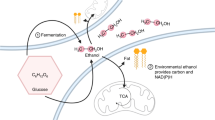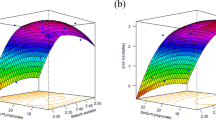Abstract
ACETATE is oxidized in animal tissues by cyclophorase1, a purified enzyme system that catalyses the tricarboxylic acid cycle and the associated phosphate exchange2,1,3,4. Dinitrophenols (about 10-4 M), which dissociate oxidations from phosphorylations5,6,7, completely inhibit cyclophorase8, as the coupling of oxidations and phosphorylations with oxidation of acetate, etc., seems to be essential for cyclophorase activity. Acetate oxidation by Saccharomyces cerevisiæ9,10,11, Pseudomonas calcoacetica12, and Escherichia coli13 is not apparently inhibited, or may be even increased12,9,10, by 10-4 M 2,4 dinitrophenol, which is inconsistent with the hypothesis that in the micro-organisms referred to, acetate is oxidized by a cyclophorase-like system. The whole problem, therefore, requires re-investigation, as Cross et al. have noted2, especially when the tricarboxylic acid cycle is the main pathway for acetate oxidation in yeast.
This is a preview of subscription content, access via your institution
Access options
Subscribe to this journal
Receive 51 print issues and online access
$199.00 per year
only $3.90 per issue
Buy this article
- Purchase on Springer Link
- Instant access to full article PDF
Prices may be subject to local taxes which are calculated during checkout
Similar content being viewed by others
References
Grafflin, A. L., and Green, D. E., J. Biol. Chem., 176, 95 (1948).
Cross, R. J., Taggart, J. V., Covo, G. A., and Green, D. E., J. Biol. Chem., 177, 655 (1949).
Knox, W. E., Noyce, B. N., and Auerbach, V. H., J. Biol. Chem., 176, 117 (1948).
Stern, J. R., and Ochoa, S., J. Biol. Chem., 179, 491 (1949).
Judah, J. D., and Williams-Ashman, H. G., Proc. Biochem. Soc. (in the press).
Lehninger, A. I., J. Biol. Chem., 178, 625 (1949).
Loomis, W. F., and Lipmann, F., J. Biol. Chem., 173, 807 (1939).
Genevois, L., and Creac'h, P., C.R. Soc. Biol., 118, 1357 (1935).
Pickett, M. J., and Clifton, C. E., J. Cell. Comp. Physiol., 22, 147 (1943).
Winzler, R. J., J. Cell. Comp. Physiol., 15, 343 (1940).
Winzler, R. J., and Baumberger, J. P., J. Cell. Comp. Physiol, 12, 183 (1938).
Clifton, C. E., Enzymologia, 4, 246 (1937).
Clifton, C. E., and Logan, W. A., J. Bact., 37, 523 (1939).
Weinhouse, S., and Millington, R. J., J. Amer. Chem. Soc., 69, 3089 (1947).
Lynen, F., Ann., 554, 40 (1943).
Umbreit, W. W., Burris, R. H., and Stauffer, J. F., "Manometric Techniques" (Burgess Publishing Co., Minneapolis, Minn.).
Leloir, L. F., and Muñoz, J. M., Biochem. J., 33, 734 (1939).
Lynen, F., Ann., 546, 120 (1941).
Author information
Authors and Affiliations
Rights and permissions
About this article
Cite this article
STOPPANI, A. Effect of Dinitrophenols on Acetate Oxidation by Saccharomyces cerevisiæ. Nature 164, 1096–1097 (1949). https://doi.org/10.1038/1641096a0
Issue Date:
DOI: https://doi.org/10.1038/1641096a0
This article is cited by
Comments
By submitting a comment you agree to abide by our Terms and Community Guidelines. If you find something abusive or that does not comply with our terms or guidelines please flag it as inappropriate.



